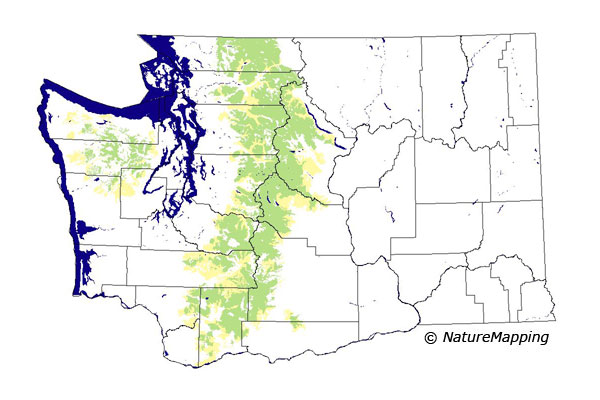 |
Metadata (Data about data or how the map was made)
Legend:
 = Core Habitat
= Core Habitat
 = Marginal Habitat
= Marginal Habitat
Predicted Distribution
Amphibians do not migrate as some birds and mammals, so the colored areas depict
the predicted range for the Cascades Frog year-round. The habitats were identified
using 1991 satellite imagery, other datasets and experts throughout the state,
as part of the Washington Gap Analysis Project.
Other
maps & Information:
|
Distribution and Habitat Requirements
The Cascades Frog is commonly found among alpine meadows, small ponds and marshy areas along streams. This frog is generally not found in closed forests.
Models
All of the Cascades and Olympic Peninsula ecoregions were chosen. The Silver Fir, Mountain Hemlock, Subalpine Fir, Grand Fir, Interior Western Hemlock
and Alpine/Parkland zones were core. Western Hemlock, Olympic Douglas-fir and Interior Douglas-fir were marginal.
Good habitats were lakes, rivers, and riparian areas. All grasslands, shrub savannas, shrublands, tree savannas and open-canopy conifer forests were
suitable where appropriate microhabitats existed.
This species occurs on rugged terrain in high-elevation zones or occasionally in parts of lower zones near higher zones.
Translated from the Washington Gap Analysis Amphibians and Reptiles Volume by Karen Dvornich
Webpage designed by Dave Lester.